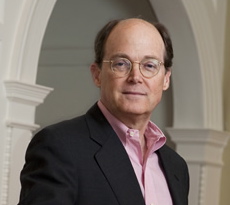In his book, Until Justice and Peace Embrace, Nicholas Wolterstorff asks, “Will the church, once it sees clearly that its calling is not to turn away from the social world but to work for its reformation, become an active agent of resistance to injustice and tyranny and deprivation?”[1] His question is born out of his understanding that humanity— and especially the Christian community— is an “ethical community.”[2] For Wolterstorff, the concept of an ethical community is shaped, at least to some degree, by his robust understanding of biblical shalom.

Shalom, for Wolterstorff, means more than peace, more than “merely the absence of hostility,”[3] and “merely being in right relationships.”[4] From Wolterstorff’s perspective shalom incorporates human beings “dwelling at peace in all their relationships: with God, with self, with fellows, with nature.”[5] The concept is further expanded when Wolterstorff writes that shalom “is perfected when humanity acknowledges that in its service of God is true delight.”[6] With these things in mind, Wolterstorff writes,
Can the conclusion be avoided that not only is shalom God’s cause in the world but that all who believe in Jesus will, along with him, engage in the works of shalom? Shalom is both God’s cause in the world and our human calling. Even though the full incursion of shalom into our history will be divine gift and not merely human achievement, even though its episodic incursion into our lives now also has a dimension of divine gift, nonetheless it is shalom that we are to work and struggle for. We are not to stand around, hands folded, waiting for shalom to arrive. We are workers in God’s cause, his peace-workers. The missio Dei is our mission.”[7]
God’s mission, according to Wolterstorff, is the mission of shalom and thus shalom is also the mission of those who profess to belong to Jesus. This mission, however, is larger than the notion of peace as it relates to dealing with conflict. Rather, the mission of God’s people is to “work and struggle for”[8] the restoration of people in all aspects of life. It is in this service, this work, that human beings will find true delight.
 This mission of shalom being the missio Dei and therefore also the mission of God’s people is a compelling idea. It is well known, however, that “ideas do have consequences,”[9] something that Wolterstorff acknowledges. The suggestion that the church should be actively engaged in the work of shalom brings up two questions. First, what is the work of shalom that Wolterstorff is referring to?
This mission of shalom being the missio Dei and therefore also the mission of God’s people is a compelling idea. It is well known, however, that “ideas do have consequences,”[9] something that Wolterstorff acknowledges. The suggestion that the church should be actively engaged in the work of shalom brings up two questions. First, what is the work of shalom that Wolterstorff is referring to?
A second question relates to the manner in which the mission of shalom is to be accomplished. Wolterstorff’s statements imply the church of Jesus is not fulfilling or even adequately participating in the mission of shalom. That failure to fully engage in her primary mission suggests that the church needs to change. With that in mind another question emerges: how do pastors lead their congregations through the sort of changes that will be required in order to embrace the missio Dei?
While the answer to the first question is crucial and necessary as a starting point, the focus of this study is on the second question. In other words, it is essential to have a basic understanding of shalom as well as a grasp of the effectual work it would entail. Only then can one effectively address the question of how pastors are able to lead their congregations to the significant changes in beliefs and practices required to fulfill the mission of shalom.
According to Wolterstorff, the Christian community should see her mission of shalom in the world as one that is concerned with the flourishing of other human beings. A basis for this idea is found within Jesus’ admonition to his disciples in Matthew 5:9, “Blessed are the peacemakers, for they shall be called the sons of God.”[10] Wolterstorff contends that the meaning of this text should not be limited to resolving conflicts. In fact, he suggests that Matthew 5:9 and texts within Isaiah and the Minor Prophets are concerned with human flourishing as a part of God’s kingdom.[11] Further, Wolterstorff suggests that Jesus’ words could be translated as “Blessed are those who struggle for shalom.”[12]

James Hunter agrees with Wolterstorff. He suggests that part of conforming to the likeness of Christ means that Christians ought to be concerned and to work for the flourishing of others human beings. Hunter writes,
And so until God brings forth the new heaven and the new earth, he calls believers, individuals and as a community, to conform to Christ and embody within every part of their lives, the shalom of God. Time and again, St. Paul calls Christians to “shalom” (1 Cor. 7:15), to “follow after the things which make for shalom” (Rom. 14:19), to “live in shalom and the God of love and shalom will be with you” (II Cor. 13:11), for He is “the Lord of shalom” (2 Thess. 3:16). In this Christians are to live toward the well-being of others, not just to those within the community of faith, but to all.[13]
Perhaps one way to understand what Hunter means is to consider that the Christian ethical community extends beyond the Christian community and into love for neighbor. One pastor summed it well up when he said, “anything you want for yourself and for your children you should want for your neighbors and their children. We have to be convinced that human flourishing is intrinsic to the love of neighbor.”[14] In others words, if a Christian mother wants her children to be safe, free from hunger, fear, and harm; to be properly educated and clean; and not be subjected to discrimination due to race, gender, or special needs, it stands to reason that she would desire and work for the same things for other children in her community.
Certainly churches and Christians are concerned about their neighbors in some respects. Unfortunately, there are times when the concern for human flourishing may be obscured by personal desires. For example, while Christians may be generally concerned about the flourishing of others their willingness to take action in a specific situation may be influenced by their political views just as much as their understanding of Jesus’ teaching.
While this mindset can be true for people of all political persuasions, James Hunter focuses on the politically conservative Christian. He writes, “Christians who are politically conservative want what all people want: namely, to have the world in which they live reflect their own likeness. The representation of social life they imagine and desire is not a reflection of the reality they live, but rather their highest ideals expressed as principles for ordering individual and collective passions and interests. It is a vision of human flourishing, but one obviously framed by the particularities of their distinct worldview.”[15]
In other words, party identification and American political ideologies begin to shape the ways in which Christians understand human flourishing and thus the mission of shalom. In essence, the work of shalom may require Christians, especially those within the United States, to examine their lives against a grid that in some respects cuts across their cultural, political and ecclesial influences. Before a church can become an “active agent of resistance to injustice and tyranny and deprivation,”[16] it will, in many respects have to change its behaviors, beliefs, and practices.
Wolterstorff’s interest in this matter is more than merely academic. He suggests, “one way to change practice is to persuade individuals that the practice is wrong. Moral discourse is sometimes effective in action, particularly if those to whom one speaks are persuaded that right and wrong are grounded in the will of God.”[17] What this suggestion may not take into account, however, is the nature of the church and her people with regard to change—especially the sort of change required for the mission of shalom to be a fundamental practice within the church and the lives of her people.
 The church is known to be an institution that is resistant to change. In fact it has been suggested by one study that the resistance to change is “more pronounced in churches”[18] than in businesses and other organizations.[19] Such strong resistance to change presents a huge challenge for those in leadership within the local church, particularly pastors. If pastors are interested in leading the church to change its behaviors, beliefs, and practices to align with the missio Dei that Wolterstorff and Hunter suggest, then they will have to know how to lead significant change in a system that is not only resistant to change, but also unfamiliar with the robust meaning of shalom.
The church is known to be an institution that is resistant to change. In fact it has been suggested by one study that the resistance to change is “more pronounced in churches”[18] than in businesses and other organizations.[19] Such strong resistance to change presents a huge challenge for those in leadership within the local church, particularly pastors. If pastors are interested in leading the church to change its behaviors, beliefs, and practices to align with the missio Dei that Wolterstorff and Hunter suggest, then they will have to know how to lead significant change in a system that is not only resistant to change, but also unfamiliar with the robust meaning of shalom.

Most pastors are not prepared to lead their congregations through such a process. Author Kevin Ford underscores this reality when he writes, “Leading change in a change-resistant subculture is a tough gig. Leading change is made even tougher by the fact that most pastors, by their own admission, lack change-leadership skills.”[20] Leading change within the church is made all the more challenging for pastors by the fact that churches are the way they are to some degree by design, as noted by Harvard Kennedy School professors Ronald Heifetz and Marty Linsky:
The reality is that any social system (including an organization, country or family) is the way it is because the people in that system (at least those individuals and factions with the most leverage) want it that way…. As our colleague Jeff Lawrence poignantly says, “There is no such thing as a dysfunctional organization, because every organization is perfectly aligned to achieve the results it currently gets.”[21]
Pastors have to be aware of the systemic aspects of their congregation in order to lead any sort of significant change regarding behaviors, beliefs, and practices. Here is where the second question, which is the focus of this research project, comes to the forefront: How do pastors lead their congregations through significant change that impacts behaviors, beliefs, and practices? This is the problem at hand.
In order for churches to change their behaviors, beliefs and practices, congregations will have to be led through a difficult process. As has been stated, churches are the way they are because that is the way those within the church want it, whether that is a concerted effort or not.[22] This is not to suggest that everything within the local church must be changed, nor to insinuate that everything is wrong. At the same time, to assume that nothing needs to change about the ways in which churches engage their local communities is equally false.
The work of those in pastoral ministry requires leading congregations through significant change. This work falls to pastors because it is what Christ has called them to do. The Apostle Paul wrote in Ephesians 4:11-13, “And he gave the apostles, the prophets, the evangelists, the shepherds and teachers, to equip the saints for the work of ministry, for building up the body of Christ, until we all attain to the unity of the faith and of the knowledge of the Son of God, to mature manhood, to the measure of the stature of the fullness of Christ.” It is not a stretch to see that this text requires leadership of those in pastoral ministry. However, leading people to change their concept of shalom, their behavior toward others, their beliefs about themselves, their place in Christ, or their daily practices as His followers, creates an environment ripe for tension,[23] resistance,[24] and conflict.
What makes leading substantive change all the more problematic is that many pastors view tension, resistance and conflict as something to be avoided (due to the danger it represents), or as a challenge that must be overcome quickly. Others view conflict as merely an opportunity to showcase the gospel through biblical reconciliation.[25] However, there is ample evidence that suggests that tension, resistance and conflict are actually good indicators[26] and even allies[27] for the process of leading significant change.
It is true that the majority of the sources that advocate for leveraging conflict come from outside the ecclesial world.[28] Nonetheless, the theories and practical indicators of these studies are relevant to pastoral leadership and significant change. In fact, some Christian authors are encouraging pastors to consider strategically orchestrating[29]tension,[30] resistance[31] and conflict in order to lead change.[32] It needs to be said that the sort of tension, resistance and conflict that is being advocated is “productive”[33] in that it is generated with great caution, concern and wisdom. Despite the urging of proponents, the idea of orchestrating of conflict is not something that is clearly seen in practice among clergy. Needless to say, the way that pastors view tension, resistance and conflict will shape the ways in which they lead a congregation through significant changes.
 It is a given that trying to lead people to change life-long behaviors, beliefs, and practices is difficult, if not downright dangerous; however, it is something that is required of pastoral leadership.[34] Pastors play a critical role in leading significant change. However many of them believe they lack the skills to navigate the sorts of strategies necessary to do so. Perhaps, far more troublesome, is a belief that leadership should disengage and avoid conflict – even if it is necessary for change. If pastors have that view there is little chance the church will embrace the mission of shalom. After all, if pastors do not see the connection between shalom, conflict and leadership how can they expect to lead their congregations through significant change necessary to be about the mission of shalom?
It is a given that trying to lead people to change life-long behaviors, beliefs, and practices is difficult, if not downright dangerous; however, it is something that is required of pastoral leadership.[34] Pastors play a critical role in leading significant change. However many of them believe they lack the skills to navigate the sorts of strategies necessary to do so. Perhaps, far more troublesome, is a belief that leadership should disengage and avoid conflict – even if it is necessary for change. If pastors have that view there is little chance the church will embrace the mission of shalom. After all, if pastors do not see the connection between shalom, conflict and leadership how can they expect to lead their congregations through significant change necessary to be about the mission of shalom?
[1] Nicholas Wolterstorff, Until Justice and Peace Embrace: The Kuyper Lectures for 1981 Delivered at the Free University of Amsterdam (Grand Rapids, MI: W.B. Eerdmans Pub. Co., 1983), 144.
[2] Ibid., 71.
[3] Ibid., 141.
[4] Ibid., 69.
[5] Ibid.
[6] Ibid., 70.
[7] Ibid., 72.
[8] Ibid.
[9] Ibid., 141.
[10] Scripture quotations are from The Holy Bible, English Standard Version, copyright 2001 by Crossway Bibles, a division of Good News Publishers. Used by permission. All rights reserved.
[11] Mark Hutton, by Mark Hutton, Conversation with Nicholas Wolterstorff. Charlottesville, VA.
[12] Ibid.
[13] James Davison Hunter, To Change the World: The Irony, Tragedy, and Possibility of Christianity in the Late Modern World (New York: Oxford University Press, 2010), 229-230.
[14] by Mark Hutton, A Confidential Interview with Pastor Jackson. St. Louis, MO.
[15] Hunter, 111.
[16] Wolterstorff, 144.
[17] Ibid., 142.
[18] Kevin Graham Ford, Transforming Church: Bringing out the Good to Get to Great, 2nd ed. (Colorado Springs, CO: David C. Cook, 2008), 29.
[19] Ibid.
[20] Ibid.
[21] Ronald A. Heifetz, Alexander Grashow, and Martin Linsky, The Practice of Adaptive Leadership: Tools and Tactics for Changing Your Organization and the World (Boston, MA: Harvard Business Press, 2009), 17.
[22] Ibid.
[23] James Harold Herrington, Jim Bonem, and Mike Furr, Leading Congregational Change: A Practical Guide for the Transformational Journey (San Francisco: Jossey-Bass Publishers, 2000), 100.
[24] James P. Osterhaus, Joseph M. Jurkowski, and Todd Hahn, Thriving through Ministry Conflict: By Understanding Your Red and Blue Zones (Grand Rapids, MI: Zondervan, 2005), 112-113.
[25] Ken Sande, The Peacemaker: A Biblical Guide to Resolving Personal Conflict, 3rd ed. (Grand Rapids, MI: Baker Books, 2004), 22.
[26] Heifetz and Linsky, Leadership on the Line: Staying Alive through the Dangers of Leading, 110.
[27] Osterhaus, Jurkowski, and Hahn.
[28] Heifetz, Grashow, and Linsky, The Practice of Adaptive Leadership: Tools and Tactics for Changing Your Organization and the World; Heifetz and Linsky, Leadership on the Line: Staying Alive through the Dangers of Leading; Dean Williams, Real Leadership: Helping People and Organizations Face Their Toughest Challenges, 1st ed. (San Francisco, CA: Berrett-Koehler, 2005).
[29] Heifetz, Grashow, and Linsky, The Practice of Adaptive Leadership: Tools and Tactics for Changing Your Organization and the World, 149.
[30] Herrington, Jim Bonem, and Mike Furr, 100.
[31] Osterhaus, Jurkowski, and Hahn, 112-113.
[32] Ford; Herrington, Jim Bonem, and Mike Furr; Osterhaus, Jurkowski, and Hahn.
[33] Patrick Lencioni, The Five Dysfunctions of a Team: A Leadership Fable (San Francisco: Jossey-Bass, 2002), 202.
[34] Heifetz and Linsky, Leadership on the Line: Staying Alive through the Dangers of Leading, 2.

